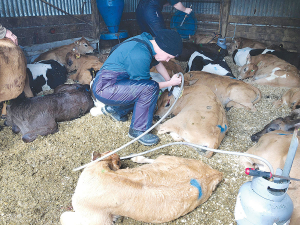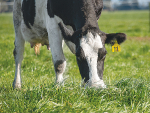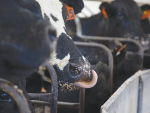Pain is a form of ‘suffering’, it is an animal welfare issue and an increasing concern of consumers which affects the marketability of animal-produced products.
Productivity can be impacted by pain as it impairs normal functions such as growth and production which directly impacts the farming business.
Pain is defined as an unpleasant, subjective feeling or sensation associated with actual or potential tissue damage that results from chemical, thermal or mechanical stimulation of nerve endings. It is a normal physiological process that indicates a ‘stress’ response and the ease of relief depends on the intensity and duration.
As cattle are prey animals they have developed a survival strategy and a stoic nature that disguises any sign of pain until the stimulus is severe which can make it difficult to detect pain until the cause is relatively advanced. Pain can be acute and chronic. Any inflammatory condition (with a suffix ‘-itis’) is associated with pain and once pain becomes chronic or pain is associated with a chronic disorder, it is more difficult to control.
Pain on farms
There are a number of husbandry procedures performed on farms to reduce aggression and carcass damage and improve identification, handler safety and meat quality.
It is important to determine methods to mitigate the pain during a justifiable procedure but readily pain relief is perceived as a cost.
But the cost of using pain relief is regularly offset by faster recovery, better productivity and an improved image of the sector.
To demonstrate this we can explore some work that looked at treating clinical mastitis.
In the results they saw if a combination of pain relief and antibiotics was used there were lower somatic cell counts and a reduced risk of cows needing to be removed from the herd compared with treating with antibiotics alone.
On top of the management benefits, there are also the financial rewards to be considered. For example, if a farm treated 100 cows with mastitis and it was estimated the cows were 500kg, the potential cost of pain relief using Metacam would be $3,500, based on the cost per dose of approximately $35.
Since they would be treated with antibiotics anyway, we can exclude the value of withholding the milk but there will potentially be 12 fewer cows culled at the end of the season due to mastitis. Depending on the value of a milking cow versus cull cow price at the time, that could equate to a value of $12,000 for the business.
So subtracting the cost of the pain relief, the farm is roughly $8,500 better off and they have a better ability to selectively cull as well as comfort knowing their animals received adequate support during their ill health.
Another situation where pain relief has been shown to improve outcomes is when calves are disbudded. If pain relief is used alongside the local anesthetic, studies show calves have higher milk intakes and grow faster by day 15 than calves who don’t receive pain relief.
This shows that using pain relief has benefits beyond improving welfare as calves recover faster and reach weaner weight sooner.
Although there are times when pain relief is not suitable, for example, a bad fracture, if there are no products accessible, or there is a grave prognosis. But suffering should be avoided and euthanasia must be considered in those situations.
Always talk through your options with your veterinarian and have standard operating procedures in place to help the farm team determine the best course of action.
Ultimately, when planning animal health this spring and throughout the season, it is worth considering utilising pain relief to treat unwell animals or perform routine procedures.
To prevent some of the productivity losses caused by animals experiencing pain, support their recovery, improve public perception and ensure you are maximising the productivity of your farming businesses.
- Samantha Tennent is general manager of WelFarm


















